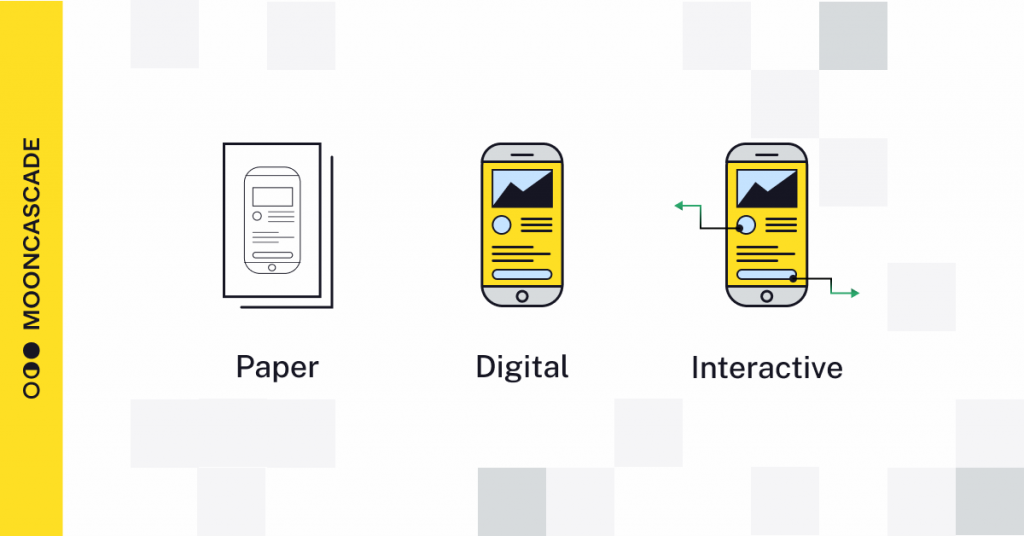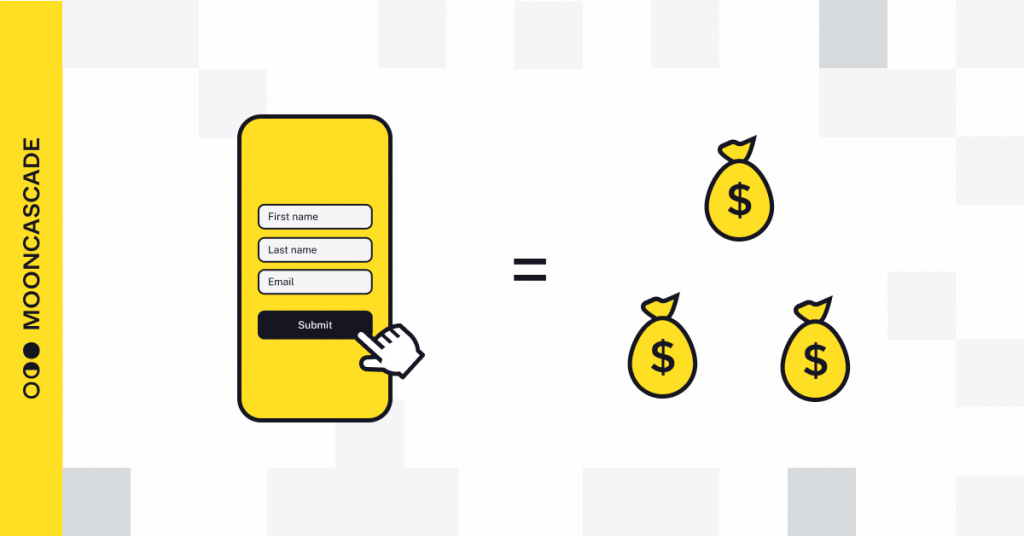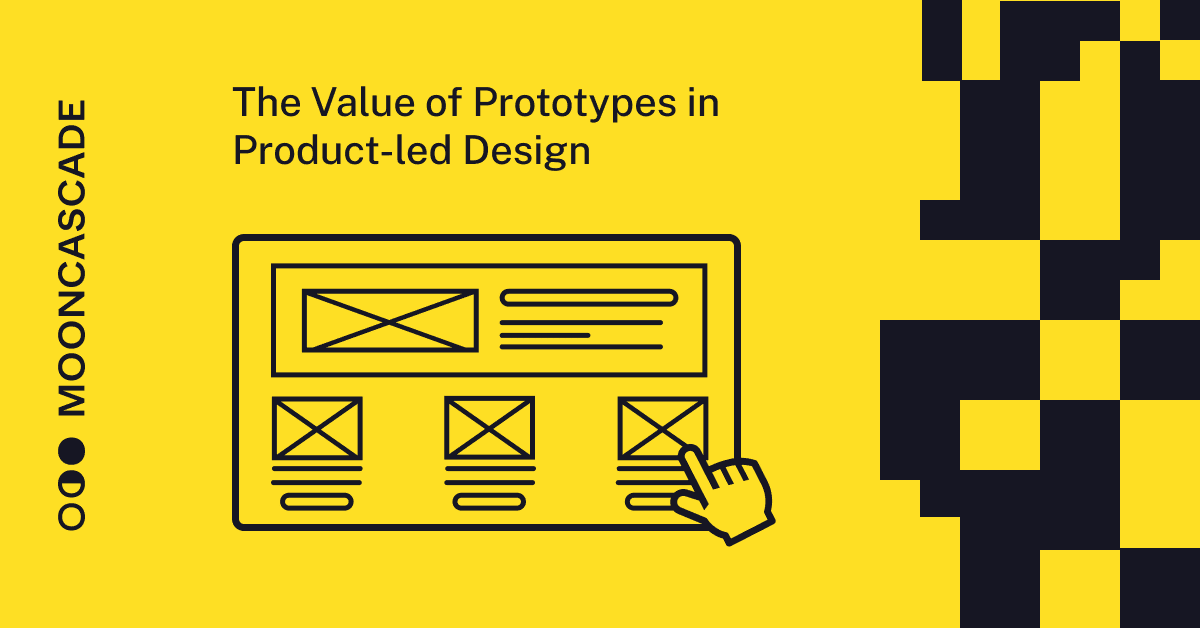The Value of Prototypes in Product-led Design
When you first hear the word prototype, images of brilliant inventors or Tony Stark building his latest Iron Man suit might start dancing in front of your eyes. And while prototypes in product design aren’t quite as sensational, they’re certainly no less essential.
If you’re a professional within the wonderful world of product design and development, you know first-hand that creating something valuable for people can be a lengthy process. From discovery, to ideation, to content, to design, and finally going to market—literal months can go by. Which is exactly why prototypes are the hidden star of the product design process.
And it’s time to put prototyping in the spotlight!
By creating a prototype, you can test your product idea with users and get feedback early on in the development process. It allows you to test out your ideas in a quick and affordable manner, without having to invest the time and money necessary to create a fully-fledged product. You’re infinitely more likely to launch a successful product users will love and buy later on. (If you’re very quiet, you can hear a choir of excited investors in the distance.)
There are many different types of prototypes, each with its own advantages and disadvantages. The type of prototype you choose will ultimately depend on your specific goals and the resources you have available. That’s where this article comes in!
By the end, you’ll know everything about:
- The definition of a prototype within product design and development
- The difference between a prototype and an MVP (don’t worry: lots of people still get these two mixed up!)
- The different types of prototypes, so you can choose the right one for your process and setup
- The different design stages of prototypes
- The business value of prototypes (to help your CFO sleep soundly at night)
- And the all-important UX-factor in prototypes (solid UX = successful prototype)
Let’s dive in!

Definition of a prototype
Let’s take a moment to cover this, so we’re all on the same page moving forward:
A prototype is a scaled-down or simplified version of your product. It’s not meant to be a fully functional product, but rather a way to test your concept with users and get feedback.
One of the keywords in this definition is concept. You’re not building something that will be released. You’re building something to validate its proof of value with users, before you go back to the proverbial drawing board.
Prototypes come in all shapes and sizes, from low-fidelity paper prototypes to high-fidelity digital prototypes. The level of fidelity should be based on the type of feedback you’re trying to gather. For example, if you want to test a user flow, a low-fidelity paper prototype would suffice. But if you want to test visual design or interaction design, you’ll need a high-fidelity digital prototype.
The most important thing to remember is that prototypes are not meant to be perfect; they’re meant to be used as a learning tool to gather feedback and make improvements before investing time, money, and resources into finalizing the design.
Difference between prototyping and MVP
While the above definition of prototypes is 100% correct, a lot of people often confuse it with something called an MVP (minimum viable product). Even professionals who have worked within product design and development for years still get them mixed up!
Deciding whether to create a prototype or minimum viable product (MVP) can be one of the most important decisions product managers have to make. The right choice depends on the stage of development, the resources available, and the goals for the product.
So let’s break down the key differences between them, so you can decide which is right for your product.

Essentially, both prototypes and MVPs are incomplete versions of a product, which is where the confusion often stems from. Both reduce cost and risk when done right, but that’s where the similarities end.
The right choice for your product depends on your specific goals and the stage of development. If you’re still exploring different solutions and gathering feedback from users, a prototype is the way to go. If you’re ready to release your product to the public, an MVP is your best bet. (Some product managers may even be so lucky to have a timeline that allows them to do both!)
Whichever route you choose, remember that quality is key—your prototype or MVP needs to offer value from day one.
Types of… well, prototypes!

There are four main categories of prototypes: paper, digital, interactive, and physical.
1. PAPER PROTOTYPES
Paper prototypes are the quickest and easiest to create. They can be as simple as a sketch on a piece of paper. Paper prototypes are best suited for testing high-level concepts or exploring new ideas with users.
2. DIGITAL PROTOTYPES
Digital prototypes are more detailed than paper prototypes. They can be created using software such as Photoshop or Sketch. Digital prototypes are best suited for testing interactions and user flows with users.
3. INTERACTIVE PROTOTYPES
Interactive prototypes are digital prototypes that include some level of interactivity. They can be created using tools such as Invision or Marvel. Interactive prototypes are best suited for testing user experience and usability with users.
4. PHYSICAL PROTOTYPES
Physical prototypes are actual products that have been created using manufacturing techniques such as injection molding or 3D printing. Physical prototypes are best suited for testing form factor and ergonomics with users.
The most common choices within product design tend to be paper, digital, or interactive prototypes. At the end of the day, your choice will depend on what you’re trying to uncover and how you want to research it.
The different stages of prototyping
Another way to categorize prototypes is by looking at them based on their level of detail: low-fidelity, medium-fidelity, and high-fidelity:
- Low-fidelity prototypes are really rough outlines of a design and/or flow. They can be created using paper or digital tools.
- Medium-fidelity prototypes are more refined than low-fidelity prototypes but not as polished as high-fidelity prototypes. They can be created using digital tools such as Figma, Sketch, or Photoshop.
- High-fidelity prototypes are highly polished. They closely resemble the final product in both form and function. They’re extensively designed (and sometimes even have a dash of development in them), and give the user the feeling that they’re using a product that’s real. This might be the way to go if you want to follow up with an MVP.
Choosing the level of detail you want in your prototype will help you define your timeline, resources, and which team members need to chip in to make the prototype a successful experience during user testing.
Business value and benefits of prototyping

There are many benefits to prototyping, which is why it is such an important part of the product design process.
1. TEST ASSUMPTIONS AND VALIDATE YOUR IDEA
Having a good idea is all fine and well, but if it’s not valuable for your users, it’s not valuable for your business. By creating a prototype, you can get the answers to some core questions a lot quicker. Have you understood your users’ pain points correctly? Is your solution really solving their problem in the way they prefer and can make sense of? Does your concept actually hold in a design? By creating a prototype, you can make more informed decisions about the direction of your product and put certain assumptions to rest.
2. GATHER USER FEEDBACK AND IMPROVE YOUR PRODUCT
Prototyping is a great way to test your assumptions about the product and gather feedback from users. By putting your product in front of users and seeing how they interact with it, you can quickly identify any areas that need improvement. User testing can also help you assess whether the features you have included are actually being used or if there are other features that users would find more valuable. Doing multiple rounds of prototyping will give you valuable insights each time you test. You can test multiple designs, copywriting versions, and features until you find the perfect combination for your product.
3. SAVE TIME AND MONEY (AND AVOID COSTLY MISTAKES!)
This is where a lot of product departments and teams experience pushback. The idea of creating a prototype may seem like extra work, which tends to mean more costs. But nothing could be less true. Yes, it’s an extra step in your process. But it will save you a lot of time and money in the end. How, you may ask? By getting feedback early on, you avoid needing to make costly changes and rebuilding things in the later stages of development. Or, the nightmare of any company: finding out your new product or feature isn’t adopted by users at all, and needs to be scrapped altogether. In the end, it’s much cheaper and easier to make changes to a prototype than it is to make changes to a final product.
4. CREATE CLARITY
You know what people say about assumptions. And that’s especially true of product ideas. Until something is created and concrete, everyone will have their own understanding of what a product should look like, how it should work, what it should sound like, what it should be named… Which will ultimately end up in a product that’s all over the map, and informed by personal opinions and internal bias. Big yikes! By creating a prototype, you’ll create a powerful source of clarity for everyone involved. And this is before you even put your prototype in front of your test users! It’s a great way to get everyone on the same page, and to identify mistakes or possibilities for improvement that weren’t obvious before prototyping.
5. GET FUNDING (EXTERNAL)
A well-executed prototype can be a valuable tool for sealing the deal with investors. A prototype can help investors visualize your product and see its potential. In addition, a prototype can help you gauge investor interest and secure commitments for funding. Not having a well-built and validated prototype might even raise questions about your commitment and expertise, and lead to a disappointing decline from a VC fund that could’ve been an enthusiastic commitment.
6. GET BUY-IN FROM STAKEHOLDERS (INTERNAL)
A prototype can also help you get buy-in from stakeholders such as managers, executives, or partners. By showing them a prototype, you can give them a better understanding of your product and its potential. This buy-in is essential for moving forward with your product development (and getting other teams on board in making the eventual product a success).
The UX-factor in prototyping

UX is the key to whether your prototype will fail or succeed. Even a simple sketch will do wonders to learn about your product IF the copy is clear and concise, the actions are intuitive, and the product offers a solution that speaks to the user’s needs.
HOW DO YOU SET YOUR PROTOTYPE UP FOR UX SUCCESS?
1) Before testing, get your UX designers, UX researchers, and UX writers in the same room and agree on the success criteria for the user test. What tasks do you want external users to perform? What assumptions do you have? What does it mean for the prototype to be “successful” and for you to have understood the assignment correctly?
2) This one might seem obvious, but it bears saying: Always test on external users who represent your end-users. Testing on internal users will give you biased results and it will sabotage the very reason you even made a prototype to begin with.
3) Record and analyze the user test, allowing each UXer to hone in on their various areas of expertise:
- The UX researcher will facilitate the test to ensure that the research stays on track, the user is not influenced in any way, and the data collected is free of bias.
- The UX designer will pay special attention to behavior (e.g. hesitation, enthusiasm, recognition, etc.) on specific screens that stalls or propels the user to move with ease through the flow.
- The UX writer will listen to the language the user expresses when showing confusion. “When you say X do you mean Y?” (Users are often the best source for finding copy that works!)
There’s so much more to dive into for each UX area, but this should give you the gist of it. As long as you don’t underestimate the power and influence of the UX-factor in prototyping, you’re good to go.
To MVP, or not to MVP?
To wrap up: a prototype is an early sample of your product that is used to test concepts, interactions, and user flows. Building prototypes has many benefits including saving time and money, gathering feedback from users, and generating buy-in from stakeholders.
Whether you’re just starting out with your first paper prototype or you’re ready for user testing with a high-fidelity digital prototype, don’t underestimate the power of this important tool in the product design process!
And if you’re curious to hear more about MVPs, stay tuned for our next article specifically dedicated to creating a cost-effective, yet scalable MVP. (Small teaser: Prototypes are great at revealing if and how your product solves user pain points, but MVPs are the way to go if you want to determine whether your product will actually sell in the real world!).Have a great product idea, but don’t know whether it should be a prototype or MVP? Mooncascade is home to highly skilled professionals who can bring their years of experience and best industry practices to your project. Feel free to drop us a line if you’re ready to turn your idea into a product that maximizes your business value.

